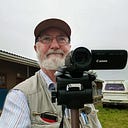The Xolobeni Contemplations #2
Butterflies in the Soul
My pilgrimage toward ecological intelligence
The latest flap of the wings of a superabundant flutter of white butterflies (belenois aurota) zigzagging across Johannesburg has again troubled my soul and reminded me of a Butterfly Effect that started nearly thirty years ago when my son Samuel was a three-year-old toddler. He is now 31.
I was living, working and studying in Cape Town, and had just completed a post-graduate degree in theology at the University of Cape Town. It was time to emerge from the cocoon of intense intellectual discourse of heady seminars and get back down to earth: to start getting to grips with my parental role as the father of a three year old son, Samuel and another one on the way.
From a very early age Sam — like all young children if given the chance — was fascinated by the natural world. He found a caterpillar in the garden, and adopted it. The little creature was put in a glass jar, suitably adapted for live animal habitation and furnished with a collection of leaves to feed and nourish it. It stayed beside his bed for days. Fresh leaves were added daily, making the container more like a mini compost heap than a caterpillar habitat. After a while the small animal became indistinguishable within the stew of rotting organic matter.
My journal records.
“Come on son, the thing is beginning to smell” I advise after bedtime rituals, “The caterpillar is surely dead by now. Let’s throw it out”.
“No Dad, leave it alone,” he protests vigorously.
A few more nights pass until one evening a loud shriek of excitement come from his bedroom. He comes running from his room in a state of trembling excitement. “Mom, Dad, come and look”. Leading us back to his bedroom, with wide eyes and a voice trembling with fearful emotion, Samuel shows us what now inhabits the glass jar. “Look what has happened!”
In the jar at his bedside an orange and black butterfly (Acraea horta), stretches and drys its wings for flight.
“What do you think we should do with her?” I ask.
“We need to set her free” he replies.
His little heart racing with excitement, and his eyes wide in amazement Samuel takes the jar out to the verandah overlooking our front garden. He opens the lid to allow the butterfly to emerge from its cramped captivity. With increasing confidence, it spreads its wings in exercise for its mission ahead, and then flies off on a gentle breeze into the dark night.
So intense is the encounter, Samuel has a disturbed and restless night.
Wherever the actual butterfly was, an archetypal vestige of the creature was still present in his imagination. And of course mine.
From an apparently rotten stew of dead leaves a powerful but gentle force of nature had emerged.
I wonder when, where and whether a tornado may result.
Winter 1995.
The force, in silent, subliminal motion, again breaks the surface of consciousness. Samuel, now aged seven, is watching the SABC TV Environmental Program “50/50” with me.
It features a report of a threat posed to the newly discovered — and probably last remaining — habitat of the Brenton Blue butterfly (Orachrysops Niobi), which was thought to be extinct. We are told that a developer has acquired a virgin stretch of coastal land, south of the Knysna Heads on the Garden Route intent on constructing an up market estate. The presenter, Erald Felix, reports that the land had been bought without anyone knowing that it was already home to the Brenton Blue butterfly and a species of ant with which it had a unique symbiotic relationship. The Environmental Impact Assessment process had turned up what some would regard as a seemingly inconsequential butterfly that was in the way of “development”.
Mercifully an agreement has been reached between the developer, the local municipality and the State conservation authorities to protect the habitat and save the butterfly from extinction. The local municipality is prepared to make another a plot of land available nearby that was not as environmentally sensitive. But money needs to be raised to make it all happen.
“A fund raising drive has been started and at the end of the program we will provide you with the bank account details for donations” Erald announces. “So make sure you have a pencil and paper handy to write it down.”
Sam, who had been watching and listening intensely, suddenly dashes off. He returns with a pencil and paper. “Please take down the details where I must send the money Dad. We must save the butterfly”, he says.
He runs back to his room and returns holding with his piggy bank which he has been filling up to save money to buy a new toy that he has had his eye on.
As he counts out the modest contents of his money box, I weep quietly to myself, resolving to do whatever I could to
“Choose Life, so that you and your children might live” (Deuteronomy 30:19).
In February 2015 I visited the Brenton Blue Nature Reserve to see how it was doing and met the curator Dr Dave Edge. I told him the story.
It was consoling and encouraging to hear how the Brenton Blue was thriving.
To be continued.
